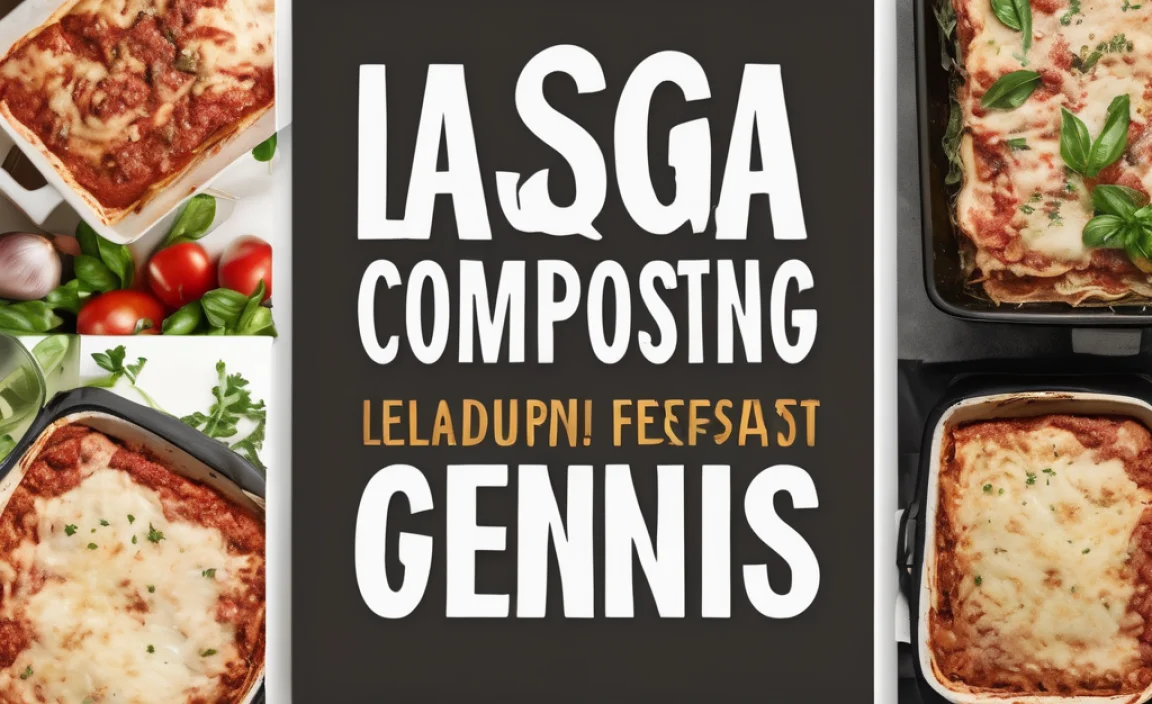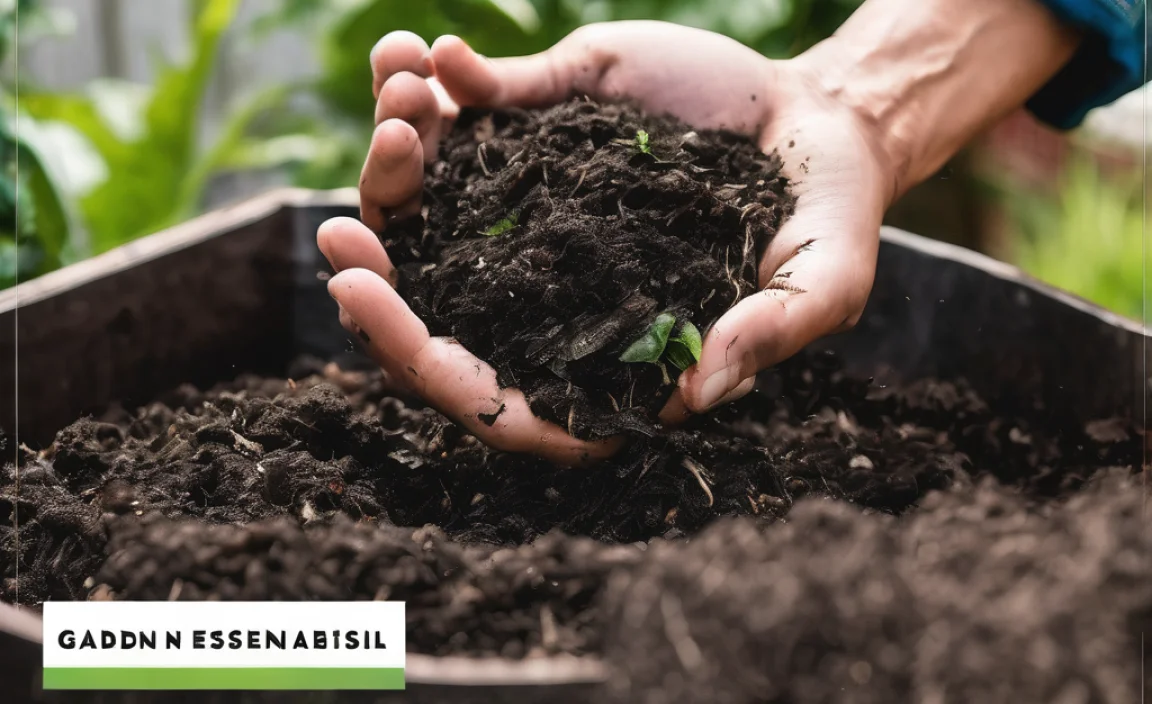Have you ever wondered what makes a garden thrive? One secret is right in your backyard: a compost heap! Imagine turning kitchen scraps into plant food. It’s like magic, but it’s real. Learning some compost heap tips can help you start your own. Would you like to see your plants grow strong and healthy? Let’s dig into the world of composting and uncover its secrets.
Key Takeaways
- Composting turns waste into nutrient-rich soil fast.
- Mix green and brown materials for balance.
- Use water and air for perfect composting conditions.
- Compost heap tips help you avoid common mistakes.
- Compost improves soil and plant growth greatly.
Understanding Compost Heap Basics
Creating a compost heap is like building a sandwich. You need different layers to make it work. Start with a mix of green and brown materials. Green items include fruit peels and grass clippings. Brown items are dry leaves and twigs. The balance of these materials helps break down waste into compost. Air and water play important roles too. Without them, the process slows down.
- Fruit and vegetable scraps are green materials.
- Dry leaves and branches are brown materials.
- Air flows through the heap by turning it.
- Water keeps the compost moist, not soggy.
- Balance green and brown materials evenly.
- Compost heaps should be in a sunny spot.
Once you get the hang of it, composting becomes easy. Each layer adds nutrients to the mix. The heat from the sun helps speed up the process. Put your compost heap in a sunny spot. Turn it once a week to let air in. This helps everything break down faster. Remember, composting is natural and happens over time.
Fun Fact or Stats : Composting can reduce household waste by up to 30%!
What Goes Into a Compost Heap?
Have you ever wondered what can and can’t go into a compost heap? It’s simple! Most kitchen scraps are great for composting. However, some things are a no-go. Fruit peels, vegetable scraps, and coffee grounds are perfect. But meat, dairy, and oily foods should stay out. They attract pests and smell bad. Yard waste like grass clippings and leaves can join the compost party too!
How Does Composting Work?
Composting is like cooking a meal. It needs the right ingredients and conditions. Microbes break down the waste materials. They turn it into rich soil for plants. This process needs air, water, and warmth. Mix green and brown materials well. Turn the pile often. Keep it moist but not soaking. Soon, you’ll have dark, crumbly compost ready for your garden.
Why Is Composting Important?
Imagine sending less trash to the landfill. That’s what composting does. It recycles waste and turns it into something useful. This helps the environment and cuts down on garbage. Compost enriches soil naturally. It also helps plants grow better. With compost, your garden becomes a thriving haven. Plus, you help the planet by reducing waste!
Building Your First Compost Heap
Ready to build your first compost heap? It’s like making a giant cake. Start with a layer of brown materials. Next, add a layer of green materials. Keep layering until your heap is about three feet tall. Water it lightly. Then, cover it. This keeps heat and moisture in. Remember to turn the pile weekly. This lets air circulate and speeds up composting.
- Start with a base of dry leaves.
- Add kitchen waste like veggie scraps.
- Alternate layers of green and brown materials.
- Water gently to keep it moist.
- Cover the heap to retain moisture.
- Turn the heap weekly for air flow.
Your compost heap becomes alive with tiny helpers. Microorganisms break down the materials. Worms and insects join the fun too. They all work together to create rich, dark compost. This process takes a few months. Be patient, and soon you’ll have amazing plant food. Compost is nature’s gift to gardeners!
Fun Fact or Stats : A well-kept compost heap can reach temperatures of 140°F!
Choosing the Right Location
Where do you put your compost heap? Location matters! A sunny spot is great. Sunlight helps the compost heat up. This speeds up the breakdown process. Avoid placing your heap near trees. They might steal the nutrients. Pick a spot with good drainage. Too much water slows composting down. Plan carefully and watch your compost thrive.
Layering Like a Pro
Layering is key to compost success. Think of it like a lasagna. Each layer adds flavor and nutrition. Start with brown materials for structure. Add green materials for nitrogen. Keep the balance to avoid odors. Alternate layers as you go. Turn the pile to mix everything. Soon, your compost will be ready to use.
How to Monitor Your Compost
Do you need to check your compost heap often? Yes, but it’s not hard. Feel the moisture level. It should be like a damp sponge. Smell the compost. A fresh, earthy smell means it’s working. Turn it weekly to add air. This keeps everything moving. With a little care, your compost heap will reward you.
Maintaining Your Compost Heap
Maintaining a compost heap is easy with some tips. Keep it moist but not soaked. Water it if it’s too dry. In rainy seasons, cover your heap. Turn the pile to ensure air flow. Check the temperature with a compost thermometer. It should feel warm, but not too hot. With these compost heap tips, your pile will stay healthy.
- Water the heap to keep it damp.
- Cover in rainy weather.
- Turn weekly for air circulation.
- Check temperature regularly.
- Mix green and brown materials.
- Watch for signs of pests.
Maintaining your compost heap is like caring for a pet. It needs attention and care. If you notice bad smells, adjust your green-to-brown ratio. Too wet? Add more brown materials. Too dry? Add water. These simple actions keep your compost heap in top shape. Soon, your garden will reap the benefits!
Fun Fact or Stats : Compost heaps can shrink by 50% as materials break down!
Identifying Common Problems
Sometimes, problems arise with composting. But don’t worry, they’re easy to fix! A bad smell means too much green material. Add more brown to balance it. If the heap is too dry, water it gently. If it’s too wet, add dry leaves. Pests like rodents can be a problem. Cover the heap tightly to keep them out. Simple solutions make a big difference.
Composting Timeframes
Wondering how long it takes to get compost? It varies. In warm weather, composting is faster. It might take a few months. In colder weather, it slows down. It could take six months or more. Remember, composting is a natural process. Be patient, and nature will do its work. Soon, you’ll have rich compost for your garden.
Signs of Ready Compost
How do you know when compost is ready? It’s easy to spot. Finished compost is dark and crumbly. It smells earthy and fresh. If you see pieces of original material, it needs more time. If it looks like soil, it’s ready! Use it to enrich your garden. Your plants will thank you with lush growth.
Using Compost in Your Garden
Ready to use your finished compost? It’s time to enrich your garden. Spread a layer around your plants. Mix it into the soil for best results. Compost adds nutrients and improves soil texture. It helps retain water too. This means less watering for you. Compost is a gardener’s best friend. Watch your garden thrive with this natural boost.
- Spread compost around plants.
- Mix compost into the soil.
- Use compost to improve soil texture.
- Compost helps retain moisture.
- Enhances plant growth naturally.
- Reduces the need for chemical fertilizers.
Compost is a wonder for any garden. It supports plant health and growth. It reduces the need for chemical fertilizers. Your plants will grow stronger and healthier. Plus, using compost reduces waste. It’s a win-win for you and the Earth. Enjoy the bounty of your thriving garden!
Fun Fact or Stats : Compost can improve soil’s water-holding capacity by 20%!
Best Practices for Application
Do you know the best ways to use compost in your garden? There are simple tips to follow. Add compost in spring and fall. This gives plants a nutrient boost. Use a tiller to mix compost into the soil. Spread a thin layer on top as mulch. This helps keep weeds down. These practices make sure your plants get the most from compost.
Comparing Soil Mixes
How does compost compare with other soil mixes? Let’s see! Compost is rich in nutrients. It improves soil structure. It helps soil retain water. Commercial soil mixes might have added chemicals. They can be more expensive. Compost is natural and cost-effective. It’s the eco-friendly choice for your garden.
| Feature | Compost | Commercial Mix |
|---|---|---|
| Nutrients | Rich and natural | May contain added chemicals |
| Soil Structure | Improves naturally | Less impact |
| Cost | Cost-effective | More expensive |
| Water Retention | Enhances retention | Varies |
Why Compost is Eco-Friendly
Ever wonder why compost is good for the environment? Composting reduces waste. Less trash goes to landfills. It recycles organic materials into rich soil. Compost improves soil health without chemicals. This supports a healthy ecosystem. Using compost is a simple way to help the planet. Plus, it makes your garden flourish.
Conclusion
Composting is a simple and rewarding process. By following these compost heap tips, you can create rich soil. This helps plants grow strong and healthy. Composting reduces waste and benefits the Earth. It’s easy to start and maintain a compost heap. Enjoy watching your garden thrive with the power of compost!
FAQs
Question: What should I put in my compost heap?
Answer: Use fruit peels, vegetable scraps, coffee grounds, dry leaves, and grass clippings. Avoid meat, dairy, and oily foods. These attract pests and slow composting.
Question: How often should I turn my compost heap?
Answer: Turn your compost heap once a week. This adds air to the pile. It speeds up the composting process and reduces odors.
Question: Why does my compost heap smell bad?
Answer: A smelly compost heap means too much green material. Add more brown materials like dry leaves. This balances the heap and reduces smell.
Question: How long does composting take?
Answer: Composting can take a few months. Warm weather speeds up the process. In colder weather, it may take six months or more.
Question: Where should I place my compost heap?
Answer: Place your compost heap in a sunny spot. Sunlight provides heat, which helps break down materials faster. Ensure good drainage to avoid a soggy pile.
Question: What are some helpful compost heap tips?
Answer: Maintain a balance of green and brown materials. Turn the heap weekly for air flow. Keep it moist but not soaking. These tips ensure successful composting.


